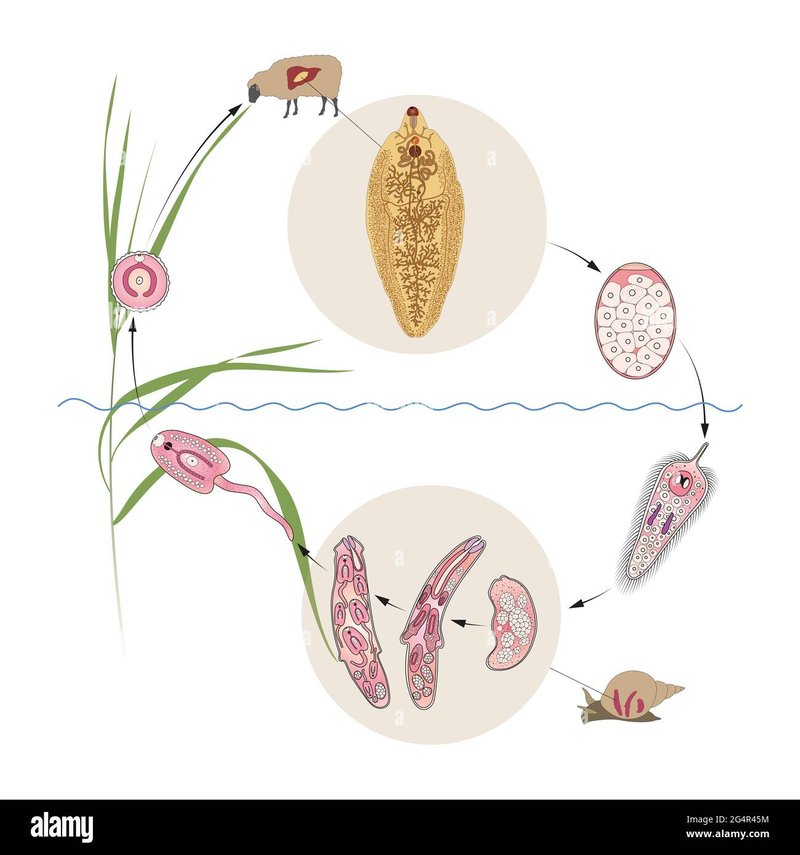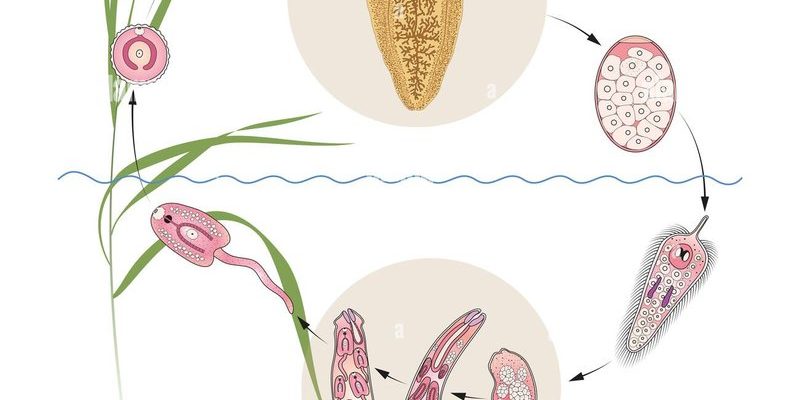
Liver flukes thrive in environments that harbor many other microorganisms. These include bacteria, protozoa, and even tiny insects. It’s a bit like sharing an apartment with roommates: everyone has a role, and their actions can impact each other in surprising ways. Understanding how liver flukes interact with these microfauna not only shines a light on their life cycle but also helps us see the bigger picture of ecosystem health.
So, let’s dive in! We’ll explore how liver flukes function within their ecosystem and the important relationships they form with other microfauna. You might be surprised to learn how interconnected everything is and why it matters.
What Are Liver Flukes?
Liver flukes are flatworms belonging to the family *Fasciolidae*. These little guys can grow up to several inches long and live primarily in the livers of various animals, including cattle and sheep. Think of them as uninvited guests that settle in a cozy home and disrupt the normal routine. Their life cycle typically involves a series of hosts, starting from snails to larger mammals, which makes them quite the cunning survivor.
Once they find their way into a host, liver flukes latch onto the liver tissues and begin feeding on blood and nutrients. Unfortunately, this can cause significant damage to the host’s liver, leading to health problems. The sneaky part? The flukes often don’t kill their hosts right away, allowing them to remain in place and continue feeding, which is a pretty clever survival strategy.
The impact of liver flukes goes beyond just the animals they infest; they also affect the surrounding microfauna. As they thrive in their host, they release waste that can influence the microbial community in the host’s gut and liver.
The Role of Microfauna in the Ecosystem
Microfauna, which includes bacteria, protozoa, and other small organisms, plays a crucial role in maintaining the health of an ecosystem. Think of these tiny creatures as the unsung heroes of the environment. They’re involved in breaking down organic material, recycling nutrients, and providing energy for larger consumers in the food web.
For example, bacteria help decompose dead matter and convert it into forms that plants can use. This process is essential for soil fertility and overall ecosystem health. Protozoa, on the other hand, feed on bacteria, creating a balance that prevents any one species from dominating. This intricate dance between organisms keeps the ecosystem functioning smoothly.
When liver flukes enter this system, they add another layer of complexity. Their presence can shift the balance of microfaunal populations, either by increasing nutrient availability (through their waste) or by harming certain microbial species. Here’s where it gets interesting: the health of the liver fluke directly impacts the microfauna around it.
How Liver Flukes Affect Gut Microbiota
When liver flukes inhabit a host, they can significantly influence the gut microbiota, the diverse community of microorganisms living in the digestive system. You might be wondering how exactly they do this. Well, liver flukes feed on their host’s nutrients, leading to changes in nutrient availability, which can impact the types of bacteria present in the gut.
Let me explain further. If liver flukes are consuming certain nutrients, it might mean that other beneficial bacteria can’t thrive, leading to a less diverse microbiota. This lack of diversity can make the host more susceptible to infections and diseases. In other words, a healthy microbiota is crucial for the overall health of the host and its ability to fend off illness.
Moreover, as liver flukes release waste products, they can either promote the growth of some bacteria or inhibit others. This can create a ripple effect throughout the gut ecosystem, impacting digestion and nutrient absorption in the host.
Interactions with Other Parasitic Organisms
Liver flukes don’t exist in isolation; they share their environment with other parasitic organisms, such as *Giardia* and various types of nematodes. Each parasite plays a role in shaping the ecosystem, and their interactions can be quite fascinating. For example, if a host is infested with multiple parasites, they might compete for the same resources. This competition can lead to shifts in population sizes, making some parasites more dominant than others.
Sometimes, these parasites can even affect each other directly. If one parasitic species weakens the host, it can lead to an easier infection for another species. It’s a bit like a game of musical chairs, where one player’s move can impact everyone’s position. Understanding these interactions helps scientists learn more about disease dynamics and how to manage them.
On the flip side, the presence of liver flukes and other parasites can also trigger the host’s immune response, which can have mixed effects on other microorganisms. A stronger immune response can control some parasites but may inadvertently allow others to thrive.
The Influence of Environmental Factors
Environmental factors play a massive role in how liver flukes interact with other microfauna. Temperature, moisture, and habitat type can all contribute to the life cycles of liver flukes and their microfaunal companions. For example, flukes tend to thrive in damp environments, like marshes and wetlands, where ideal conditions for their snail hosts are present.
Changes in climate can disrupt these habitats, impacting the entire community. If water levels drop or if there’s less moisture, it can affect snail populations, thus limiting liver fluke reproduction. The same goes for other microfauna; they depend on specific conditions to survive and thrive. When one species feels the impact of environmental changes, it can create a cascade effect throughout the ecosystem.
Additionally, pollution and human activity can further complicate these relationships. Chemicals and toxins in the environment can directly affect the health of the liver flukes and their microfaunal partners, leading to declines in populations or even local extinctions.
Implications for Agriculture and Livestock Management
Understanding how liver flukes interact with other microfauna is especially important for agriculture and livestock management. Farmers and ranchers need to be aware of the impact of liver flukes on their animals’ health and the surrounding ecosystem.
Effective management strategies can minimize the risk of liver fluke infections in livestock. For instance, maintaining healthy soil and fostering diverse plant life can help support beneficial microfauna, which can outcompete pathogens, including liver flukes. This holistic approach encourages a thriving ecosystem that benefits both the livestock and the broader environment.
Additionally, monitoring and managing water sources, particularly in areas prone to snail infestations, can help break the liver fluke life cycle. By taking these steps, farmers can not only protect their herds but also contribute to healthier ecosystems.
The interactions between liver flukes and other microfauna highlight the intricate web of life within ecosystems. Each organism, from the tiniest bacteria to the largest mammals, plays a role in maintaining balance and health. Understanding how liver flukes fit into this picture is essential for managing both agricultural practices and wildlife conservation.
When we take a closer look at these relationships, we realize that they’re not just about one species but about the entire community. Protecting and fostering diverse ecosystems can lead to healthier environments and livestock, ultimately benefiting us all. So, the next time you think about liver flukes, remember the impact they have—not just on their hosts, but on the entire web of life around them.

